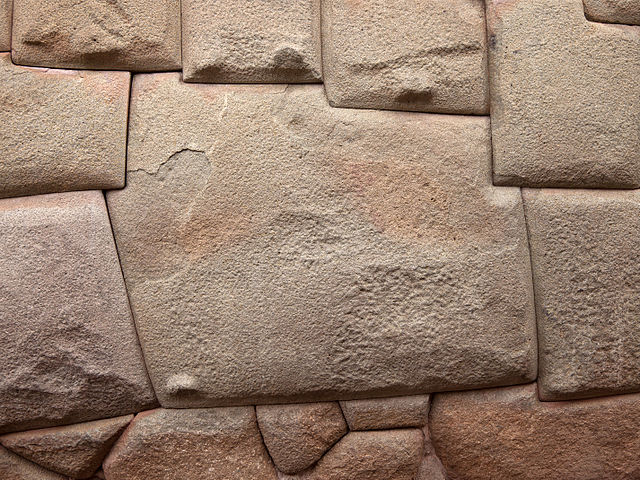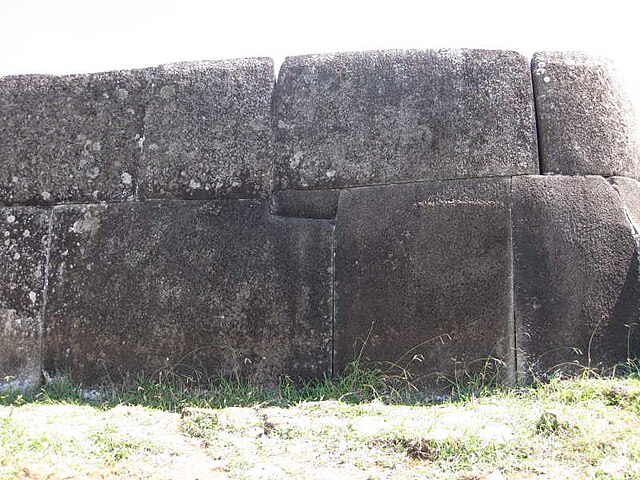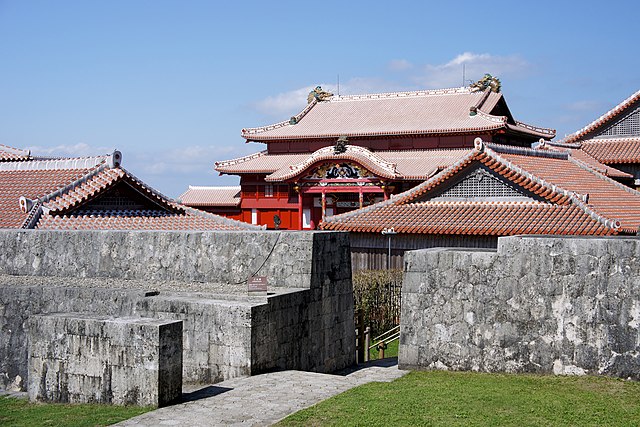Top Qs
Timeline
Chat
Perspective
Polygonal masonry
Masonry comprising stones with over 4 face angles From Wikipedia, the free encyclopedia
Remove ads
Polygonal masonry consists of stones that have five or more face angles, in contrast to ashlar blocks which have four rectangular ones.[1]

In Greece, Cyclopean masonry was the first type of polygonal masonry.[2] To fit the stones properly to each other, masons would utilize strips of lead to form templates of the already laid blocks, which were then used to shape the to-be-adjoined ones.[3]
Remove ads
Sites
Summarize
Perspective
Easter Island

Finland

Greece

Italy
In Italy, polygonal masonry is particularly indicative of the region of Latium, but it occurs also in Etruria, Lucania, Samnium, and Umbria; scholars including Giuseppe Lugli have carried out studies of the technique.[4][5] Some notable sites that have fortification walls built in this technique include Norba, Signia, Alatri, Boiano, Circeo, Cosa, Alba Fucens, Palestrina, and Terracina.[6] The Porta Rosa of the ancient city of Velia employs a variant of the technique known as Lesbian masonry.[1]
Japan

Latvia

Malta
Peru


Portugal
Russia
Spain
Turkey
United Arab Emirates
Remove ads
References
Wikiwand - on
Seamless Wikipedia browsing. On steroids.
Remove ads
